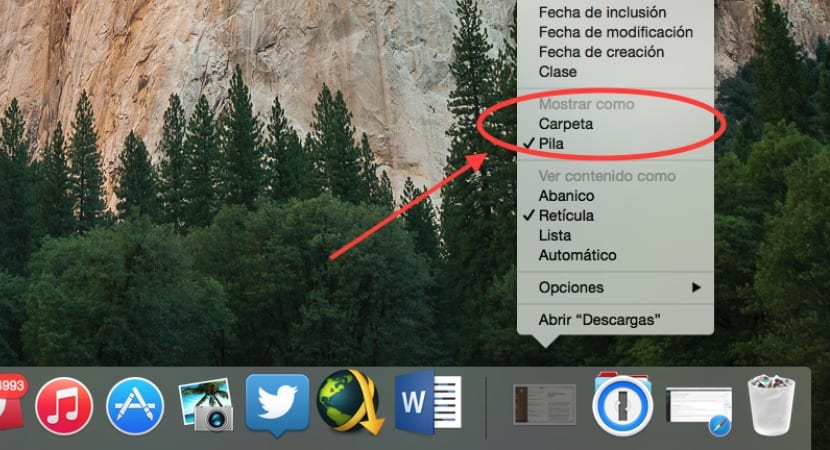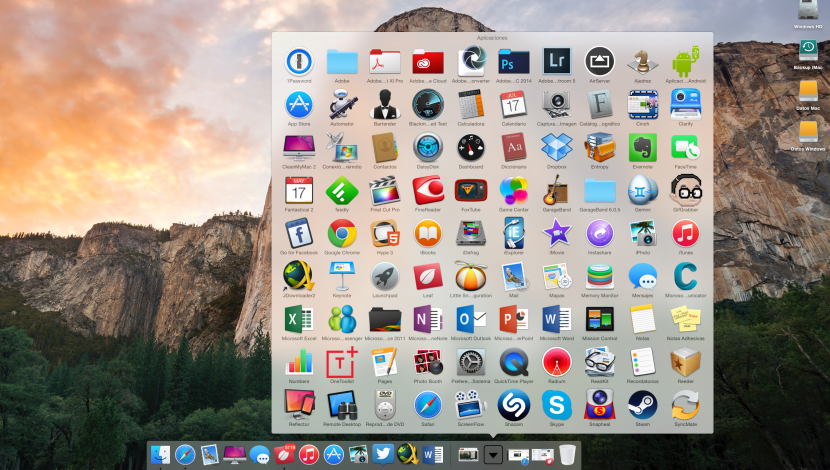
The stack format offers a method of displaying folders or sets of various items in the Mac Dock. Clicking on the folder will pop the "stack" open and display the content expanded outside of the Dock itself. display in the form of Stack we can activate it in the items inside the dock that are located on the right side of it by default, such as the Applications folder, Downloads and we can even add the Documents folder or any other folder that we usually use.
The default value for most items sets the default stack format, but we can also select to see it as a folder simply. Besides of course being able to choose to change the display method once we have it in this stack format, that is, we can select to view it as a grid, fan, list or automatic.

To carry out this change, we will simply click with the right mouse button (Ctrl + click) until the auxiliary menu appears Above and there we will see the different options to choose in Show As Folder or Stack in addition to being able to see the content as Fan, Grid, List or Automatic as I have commented previously.

In fan mode the applications will be opened as shown in the header image, as if it were a fan, on the other hand, the grid is the closest thing to the OS X Launchpad where it will show us a grid with all the applications contained in it, List is a drop-down that will show the applications in a more contained way and is ideal when we have many to show and finally automatic that will dynamically change the display mode depending on the number of items to display.